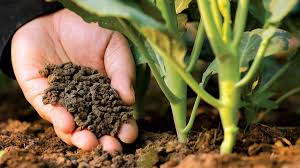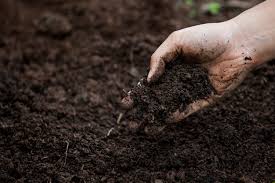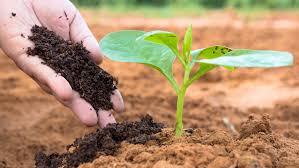Waste to fertilizer business takes organic waste materials, like food scraps or agricultural residues, and transforms them into valuable fertilizers. Instead of letting the waste go to landfills, the process involves converting it into nutrient-rich products that can be used to enhance soil quality and promote plant growth. This not only reduces environmental impact by recycling waste but also provides a sustainable solution for agriculture.
In a world where sustainability is key, the waste to fertilizer business stands tall as a champion of both environmental responsibility and agricultural prosperity. This innovative venture revolves around converting everyday organic waste, such as kitchen leftovers and agricultural residues, into a powerful ally for plant growth fertilizers.
The Process (Turning Waste into Gold for the Soil)
Waste to fertilizer systems typically involve the controlled decomposition of organic waste through composting or anaerobic digestion. Composting relies on the natural breakdown of organic matter by microorganisms, producing a nutrient-rich soil conditioner.
Anaerobic digestion, on the other hand, involves the decomposition of waste by bacteria in an oxygen-free environment, yielding biogas and nutrient-rich digestate.
Environmental Benefits of Waste to Fertilizer Business
1. Reduced Greenhouse Gas Emissions: By diverting organic waste from landfills, waste-to-fertilizer systems minimize methane emissions, a potent greenhouse gas associated with traditional waste disposal.
2. Soil Health Improvement: The resulting fertilizer enriches the soil with essential nutrients, enhancing its structure, water retention capacity, and overall fertility.
3. Circular Economy Contribution: Waste to fertilizer practices align with the principles of a circular economy by closing the loop on organic waste, transforming it into a valuable resource for agriculture.
Agricultural Impact
1. Nutrient-Rich Soil: The fertilizer produced through waste conversion provides a balanced mix of nutrients, fostering optimal plant growth and crop yield.
2. Cost-Effective Farming: Farmers benefit from a cost-effective and sustainable source of fertilizer, reducing reliance on synthetic alternatives and promoting long-term soil health.
3. Community Engagement: Localized waste-to-fertilizer initiatives encourage community involvement in waste management, fostering a sense of environmental responsibility.
Waste to fertilizer business represents a tangible step towards a more sustainable and environmentally conscious future. By harnessing the inherent value of organic waste, we not only address waste management challenges but also nurture the soil that sustains us, fostering a harmonious relationship between human activities and the environment.
Read Also: Human Health and Environmental Concerns
Transforming Biodegradable Waste into Nutrient-Rich Gold for Your Soil

In the quest for sustainable solutions, the conversion of biodegradable waste into nutrient-rich fertilizers stands as a beacon of innovation. This process not only addresses the challenge of waste management but also turns organic waste into a valuable resource for agriculture. Let’s delve into some effective methods that breathe new life into biodegradable waste.
1. Composting: Composting, often hailed as nature’s recycling, is a simple yet powerful method. Here, kitchen scraps, yard waste, and organic matter decompose over time, orchestrated by microorganisms. This microbial dance transforms the waste into a dark, crumbly substance known as compost, a goldmine of nutrients for plants. The beauty lies in its accessibility, requiring little more than a compost bin and the magic of time.
2. Vermicomposting: Enter the humble earthworm, nature’s soil engineers. Vermicomposting involves these wriggly creatures breaking down organic waste into nutrient-rich castings. The result is a potent fertilizer that enhances soil structure and enriches it with essential elements. This method, suitable for both small-scale and community initiatives, is a captivating interplay between waste and nature’s recyclers.
3. Anaerobic Digestion: In the absence of oxygen, anaerobic digestion transforms biodegradable waste into biogas and digestate. The biogas, primarily methane, can be utilized for energy, while the digestate serves as a nutrient-dense fertilizer. This method not only tackles waste but also provides an eco-friendly energy source. It’s a dual benefit that showcases the potential of waste-to-fertilizer technology.
4. Bokashi Fermentation: Originating from Japanese wisdom, Bokashi fermentation utilizes a mix of microorganisms to ferment kitchen waste. Sealed in an airtight container, this anaerobic process results in a nutrient-rich pre-compost. The fermented waste, when added to soil, accelerates nutrient release, promoting healthier plant growth. It’s a microbial symphony that transforms kitchen scraps into a potent elixir for the soil.
5. Green Mulching: Green mulching involves incorporating freshly cut plant material directly into the soil. This technique not only adds organic matter but also aids in weed suppression and moisture retention. By letting the green residues decompose in situ, you create a natural cycle where waste becomes a nurturing layer for the soil, fostering a thriving ecosystem.
In the alchemy of waste conversion, these methods emerge as ambassadors of sustainability. Through simplicity, accessibility, and a touch of nature’s magic, biodegradable waste transforms into a nutrient-rich boon for our soils, promising a greener, more fertile future.
The Importance of Waste to Fertilizer Business

Waste to-fertilizer businesses are like important players connecting how we handle waste and making sure farming is sustainable. This smart way of doing things is really important for a few big reasons: helping the environment, being smart with money, and keeping our communities healthy and happy.
1. Environmental Stewardship: Waste to fertilizer businesses play a pivotal role in reducing the environmental impact of organic waste. By diverting materials like food scraps and agricultural residues from landfills, these businesses help curb harmful methane emissions, a significant contributor to climate change. This shift towards responsible waste management aligns with global efforts to create a more sustainable and resilient future.
2. Soil Health Enhancement: One of the primary benefits of Waste-to-Fertilizer businesses lies in their ability to transform organic waste into nutrient-rich fertilizers. These fertilizers, derived through processes like composting or anaerobic digestion, act as a natural boost for soil health. They enhance soil structure, promote water retention, and provide essential nutrients, creating an environment conducive to robust plant growth.
3. Agricultural Productivity: In the realm of agriculture, these businesses contribute to increased crop yields and improved farm productivity. The fertilizers produced are tailored to provide a balanced mix of nutrients essential for plant growth. As farmers incorporate these sustainable alternatives, they not only witness enhanced yields but also reduce their reliance on synthetic fertilizers, leading to cost savings and long-term soil fertility.
4. Circular Economy Advancement: Waste to fertilizer businesses champion the principles of a circular economy by closing the loop on organic waste. Instead of viewing waste as a problem to dispose of, these businesses transform it into a valuable resource for agriculture. This shift towards circularity promotes a sustainable cycle where waste becomes a raw material, supporting a more resilient and efficient system.
5. Community Engagement and Job Creation: Local waste to fertilizer initiatives encourage community participation in waste management. As these businesses grow, they create employment opportunities at various levels, from waste collection and processing to distribution and sales of fertilizers. This not only contributes to local economies but also fosters a sense of environmental responsibility within communities.
6. Future Sustainability: The importance of Waste to fertilizer businesses extends into the future as we seek sustainable solutions for a growing global population. Continued innovation in waste management technologies and increased adoption of these practices can pave the way for a more sustainable and resilient agricultural sector, ensuring that future generations inherit a planet that thrives on responsible resource use.
Waste to fertilizer businesses stand as catalysts for positive change, addressing pressing environmental concerns while promoting agricultural sustainability. Their importance resonates not only in waste management and agriculture but also in fostering a holistic approach towards building a greener, more sustainable world.
Read Also: The Impact of Waste to Art Business
The Challenges in the Waste to Fertilizer

Embarking on the journey of turning waste into fertilizer is undoubtedly a noble pursuit, but like any venture, it comes with its share of challenges. Let’s talk about the problems in a simple way and see how we can turn them into opportunities to make the waste-to-fertilizer business stronger;
1. Technological Hurdles: Developing efficient waste-to-fertilizer technologies is a key challenge. Processes like composting and anaerobic digestion require careful monitoring and optimization. Overcoming these technological hurdles involves ongoing innovation, research, and collaboration to make these methods more scalable and cost-effective.
2. Scale-Up Struggles: While small-scale waste to fertilizer initiatives show promise, scaling up operations can be challenging. Infrastructure, logistics, and investment hurdles may hinder widespread adoption. Solutions lie in strategic partnerships, government support, and private sector engagement to bridge the gap between small-scale success and large-scale impact.
3. Public Perception: Changing how people perceive waste is a significant challenge. Public awareness and acceptance of waste-to-fertilizer practices may be limited. Education campaigns can play a crucial role in dispelling myths, emphasizing the environmental benefits, and showcasing the positive impact on soil health and agriculture.
4. Regulatory Roadblocks: Adhering to regulations and obtaining necessary permits is a complex aspect of the waste-to-fertilizer business. The industry must work closely with regulatory bodies to ensure that environmental standards are met without stifling innovation. This collaboration can foster a regulatory environment that supports responsible waste management.
5. Market Dynamics: Creating a market for waste-derived fertilizers can be challenging. Convincing farmers and agricultural businesses to adopt these products requires demonstrating their efficacy and cost-effectiveness. Collaborative efforts between the waste-to-fertilizer industry and the agricultural sector can establish the value of these fertilizers in the market.
6. Economic Viability: Achieving economic viability while keeping costs competitive is a delicate balance. Innovations in waste collection, processing, and distribution are essential to streamline operations and reduce costs. This requires a commitment to efficiency and a keen understanding of the economic factors influencing the industry.
7. Variable Feedstock Quality: The quality of organic waste feedstock can vary, affecting the nutrient content of the resulting fertilizer. Developing methods to standardize feedstock and address variations is crucial for ensuring the consistent quality of waste-derived fertilizers. Research and development efforts can contribute to overcoming this challenge.
In facing these challenges head-on, the waste to fertilizer industry has the opportunity to transform obstacles into opportunities.
Through innovation, collaboration, and a commitment to sustainability, businesses in this sector can not only address these challenges but also contribute significantly to a more sustainable and circular approach to waste management and agriculture.
Read Also: How to Use Renewable Energy on your Farm

